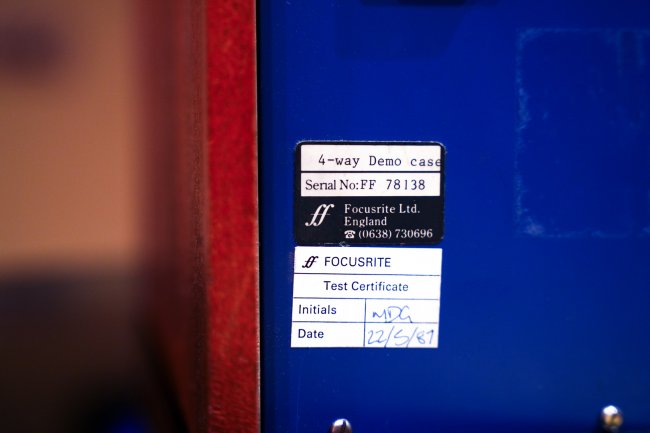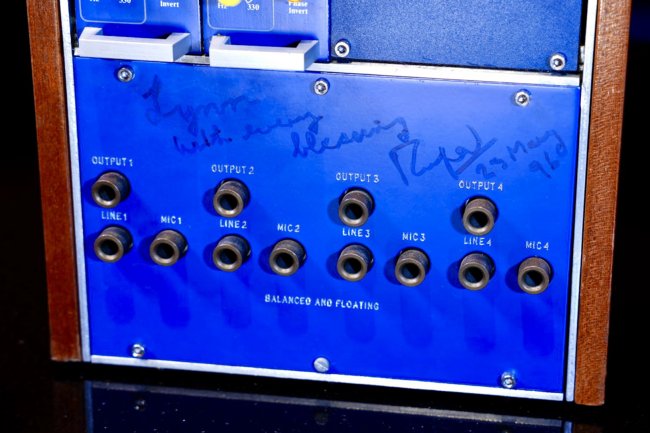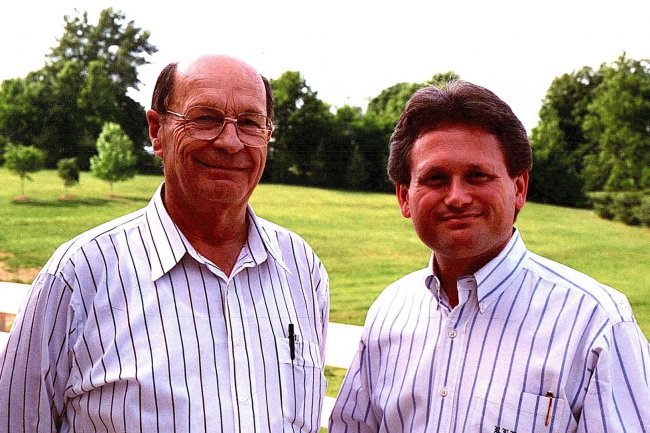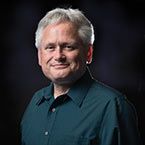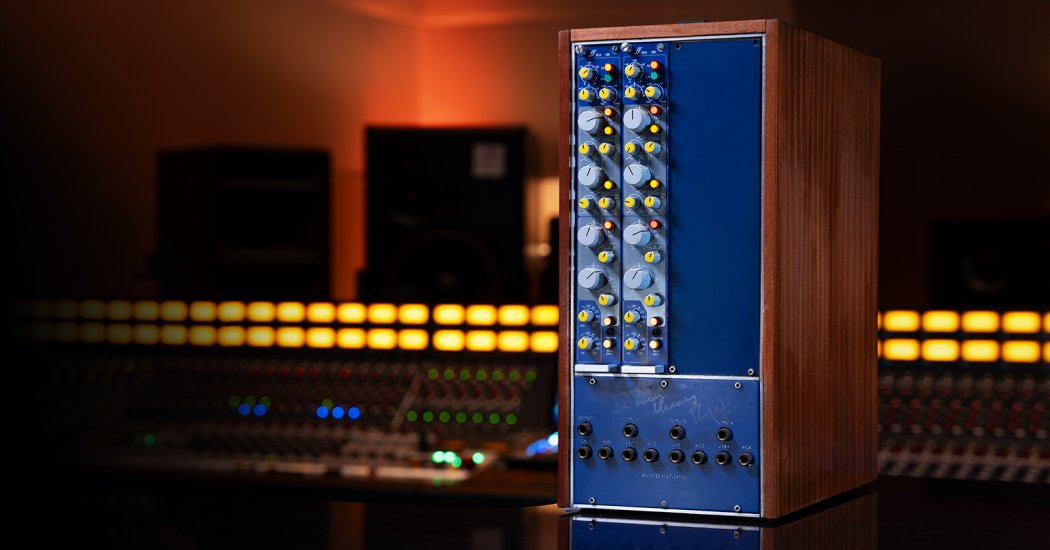
I always felt that Rupert Neve should have been bestowed the title of Member of the Most Excellent Order of the British Empire by Queen Elizabeth II. Rupert was the closest thing to audio royalty that many of us have ever known. His contributions to the recording industry are recognized internationally. Maybe if he and Evelyn hadn’t moved to Wimberley, Texas, he might have been recognized by the throne. Probably not, but “Sir Rupert Neve MBE” has a nice ring to it, doesn’t it?
What Is a Magic Bullet?
First, I should define what I consider a “magic bullet.” It’s a box or device that seems to magically make things better. It’s one of those units (or any similar tool) that sparks an “Aha!” moment — something that, when you plug it in, makes everything you do immediately better, and you wish you could rewind your career by a decade or two and do it all over again with this newfound tool. I’ve been very fortunate to experience this many times in my long career, and now I’ll share those experiences with you.
My Backstory with Neve Consoles
I was a sophomore at Belmont College (now Belmont University) in Nashville and wanted to meet the Belmont alums who worked at Sound Stage Studios. I showed up at the studio one afternoon and noticed several men struggling with a massive, quilt-covered object coming reluctantly out of the back of a delivery van.
“Need help?” I offered. “Sure,” came the swift reply. Little did I know that this would serve as my introduction to Neve consoles. This was a brand-new Neve 8068 console that was being delivered, fresh from England. We hauled it into the studio, and it was unveiled. What a sight. What a rare privilege.
A few weeks later, after the console was installed and I was interning at the studio, I finally got a chance to do a session on the Neve. I set up two AKG C414 mics on the Bechstein grand piano, and the songwriter started to play. I pulled up the faders and learned a valuable lesson that day. “So, this is how they make records sound like that!” My eyes and ears were opened.
Enter the Focusrite ISA 110
In case you don’t know Focusrite history, in 1985 Beatles producer George Martin (who many recognize as the fifth Beatle) commissioned Rupert Neve to design a no-compromise preamp and EQ module to put in a sidecar beside the new Solid State Logic 4K console at AIR Studios on the Caribbean island of Montserrat. George Martin’s direction for these input modules was crystal clear: He wanted a premium, “cost no object” input module that was the best in the world. What Rupert Neve came up with was the ISA 110 (ISA stands for input signal amplifier). After building the ISA modules for AIR Studios, the new company Focusrite Ltd. decided to offer these same modules to the world. And so their reputation started to grow.
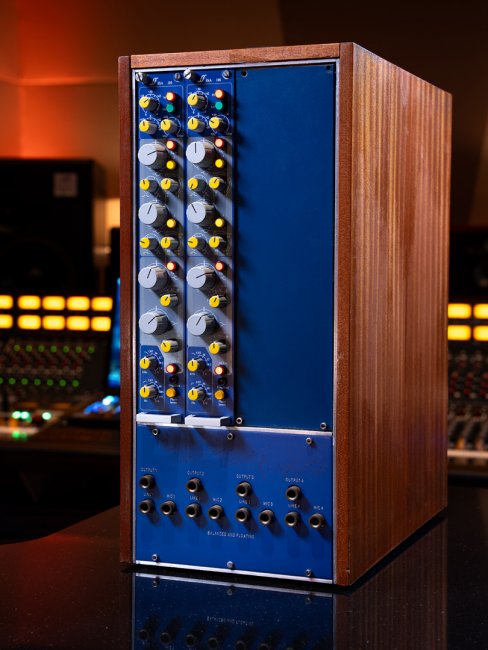
A “Cost No Object” Preamp Costs How Much?
By 1985, I knew the Neve sound. I had worked on Neve consoles for years by that time. The thought of Rupert Neve starting with a blank slate to design the best-sounding preamp ever made was intriguing. Tempting.
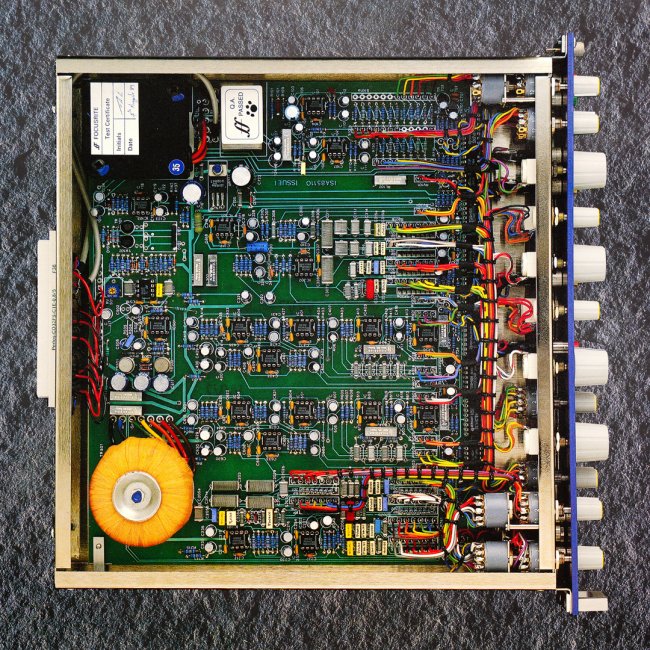
In 1986, when the Focusrite modules hit the market, I reached out to Dan Zimbelman, the US distributor. “How much are they, and how soon can I get them?” The answers to those two questions were not very encouraging. Each module was $2,800 (that’s $2,800 in 1986 dollars!) and the power supply (demo rack) was another $1,650. So, it would be $7,250 for a stereo pair in the powered demo rack. (For perspective, that’s the equivalent of $21,000 in 2024 — for a 2-channel preamp and EQ! Oh my!) How could anyone but a mega-studio or mega-producer afford that?
And when are they available, I asked. “Well, you send in a deposit, and we’ll let you know when we finish building them, and then you send the balance.” I asked how long that might take. “Probably six months.” Six months? Wow.
For historical and financial perspective, I ordered a brand-new Trident 80B recording console (28 x 24) to be built for my studio in 1984, and it was $28,000 and was delivered in three months. That’s for 28 inputs, a 24-channel monitor section, and a patchbay. This 2-channel Focusrite pair was a fourth as much as a whole Trident console.
My Focusrite ISA 110s Arrive
My modules were completed on May 22, 1987. I sent the final balance, and the units were shipped to me. These were the very first Focusrite units in Nashville. I was so excited and eager to plug them in.
If you’ve read carefully to this point, then there’s one thing any engineer will notice was missing from this whole transaction. Did you notice? That would be the listening part. What did they sound like? I had never heard them at all.
To be clear, I’m well aware that someone spending that much money on a product they’ve never heard is really absurd — except for one thing: faith. I knew Rupert Neve’s reputation and his ears. Though we had never met, I trusted his instincts wholeheartedly. I won’t say that there was no trepidation when I plugged them in for the first time, but I anticipated magic. And I wasn’t disappointed.
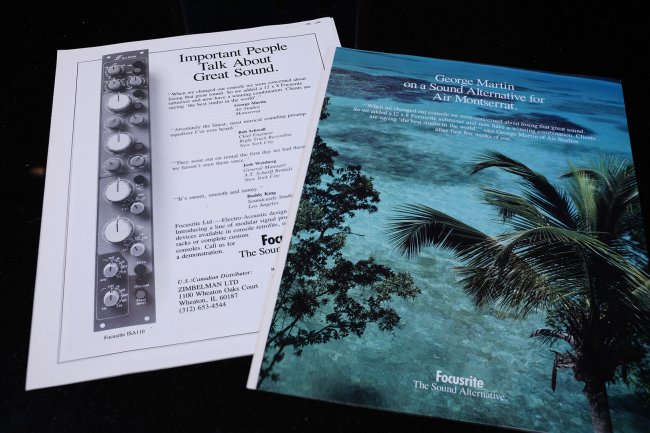
The Moment of Truth
We were in the middle of an album, so I plugged in a vocal mic — an AKG C12, I believe — to hear them for the first time. I was floored. There was an uncanny sense of realism, an almost “three-dimensional” character to the sound. Instead of sounding like a voice coming out of a speaker, it sounded almost like I could walk around the singer and hear every nuance of their performance. It was like the focus was clearer than I had ever heard before, like polishing the lens on a camera. I don’t know how else to describe it. I tried them on piano, kick drum, and snare drum (where they stayed on every tracking session I did for several decades). On voice and acoustic guitar, they were sublime. The EQ was smooth, musical, and very powerful, not requiring more than a subtle twist barely perceptible to the eye, but could be cranked, like when adding 12dB of boost at 12kHz on a ribbon mic for just the right amount of air where most people would think there was none. The bottom end was powerful but not tubby. The center frequencies for the EQs, especially on the low shelf and low mid, were in exactly the right places, and I never wished for different ones.
Clearly, I was not the only one who sensed the magic in these preamps. When I wasn’t using them on my records, they were rented out to other producers who had heard about them and wanted to experience them. Some even wanted to buy them but couldn’t wait six months to start on their records. My pair spent weeks with Amy Grant (for her Lead Me On record) and in Atlanta for an Isaac Hayes album. It was nice to be making money from the rentals, but I was always happiest when they returned. For the next 30 years, they were my constant companion in the studio.
Meeting Rupert Neve
When I finally met Rupert Neve in 1996, I brought along my unit and asked him to sign it for me. He agreed. The inscription says:
Lynn, With every blessing
Rupert
23 May 96
My Focusrites Today
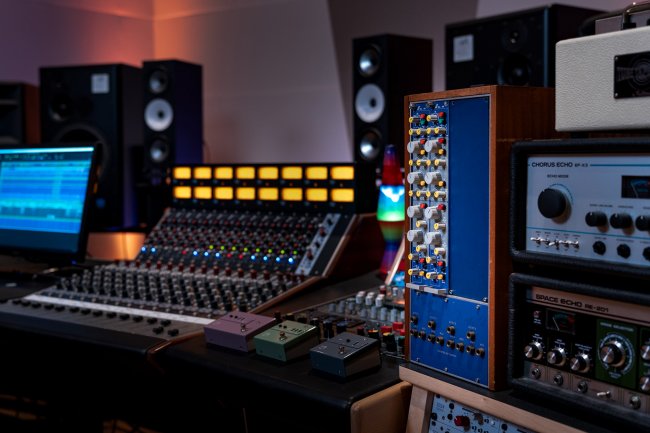
Since I’ve been at Sweetwater, I loaned my Focusrite 110s to Sweetwater Studios, and a whole new generation is now enjoying them. According to Sweetwater Studios’ Producer/Engineer Shawn Dealey, who also owned ISA 110s, “It was the first nice preamp I ever bought. It sounded amazing. I used it all the time — on drums, acoustic guitar, vocals. It just sounded high-fidelity, very musical. I used it every day in the studio.”
Trivia: The Focusrite Name
When I sat down with Rupert Neve in Nashville in 1996, we had an hours-long chat, and I asked him every question I could think of. Questions about his early designs, his technical background, even about his missionary father and his childhood in Argentina. He answered all of them graciously. One question was about my hunch about the name of the company, Focusrite. After spending years with this preamp, it became clear to me that if the sound could be made “right” at the beginning of the chain (right after the mic), focusing it just like a camera lens, then everything following would be better. I dreamed up all manner of analogies with photography: the musical artist was the subject, the microphone was like the lighting, and the preamp was like the lens. Boy, my artistic mind had run wild. “So, where did the name Focusrite come from?” I asked.
Mr. Neve smiled and replied (paraphrasing here): “Well, I was busy designing this preamp, and it was clear we needed a company. So, I went to a person who set up businesses. He had a stack of folders with available company names written on them, with all the necessary documents inside. He pulled one off the top of the stack, and it said ‘Focusrite.’ And I told him, ‘Sure, that will work.'”
How to Get the Focusrite and Rupert Neve Sound In Your Studio
The preamps from these legendary units are still available today in the Focusrite ISA range in one-, two-, four-, and eight-channel packages. They sound great, sharing the same circuitry and lineage as the original ISA 110.
Rupert Neve’s legacy also lives on in the new products from his subsequent company, Rupert Neve Designs. The Rupert Neve-designed Shelford Channel may be his crowning achievement in preamp design.
Call Sweetwater to Get the Neve Sound for Yourself
We have Sweetwater Sales Engineers ready to advise you on which preamp or console will best meet your needs. Call yours today at (800) 222-4700.


